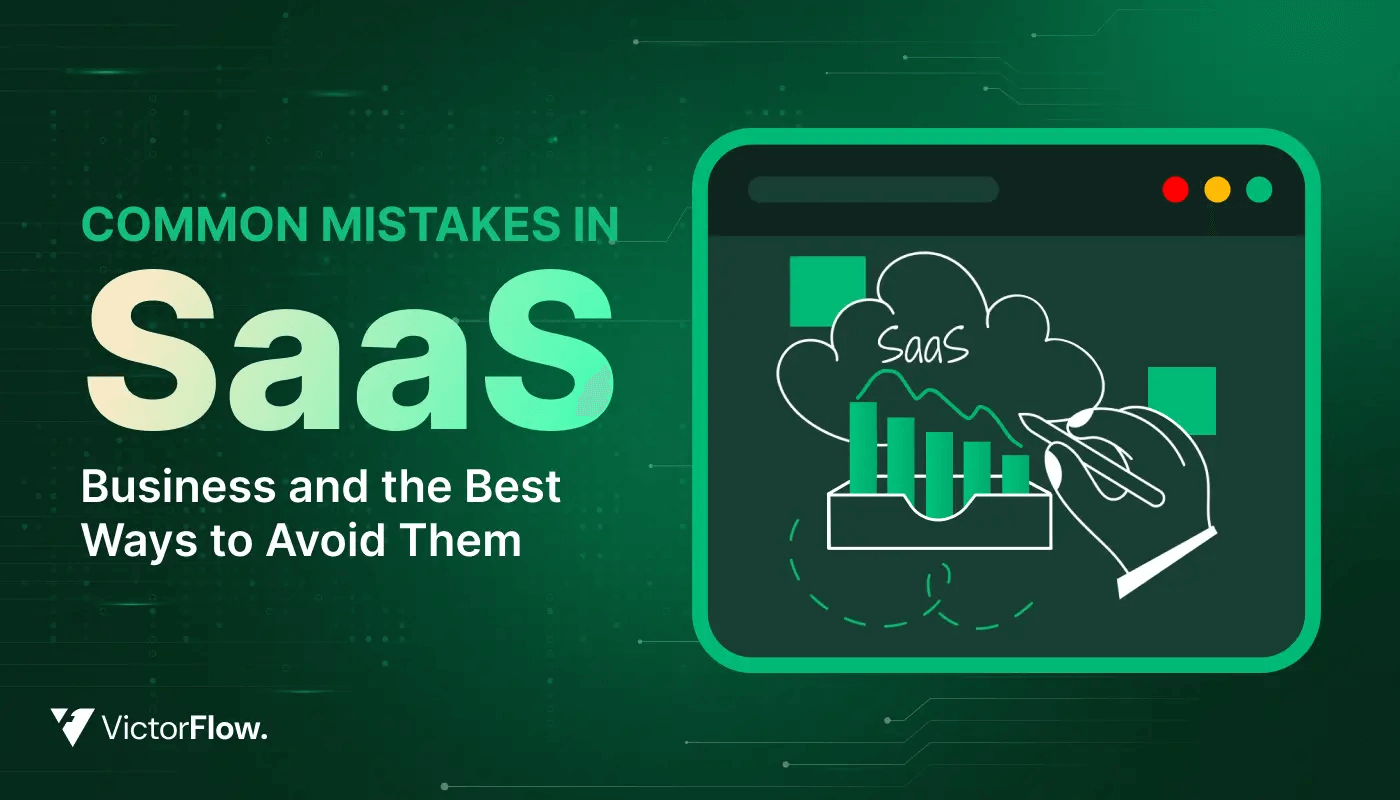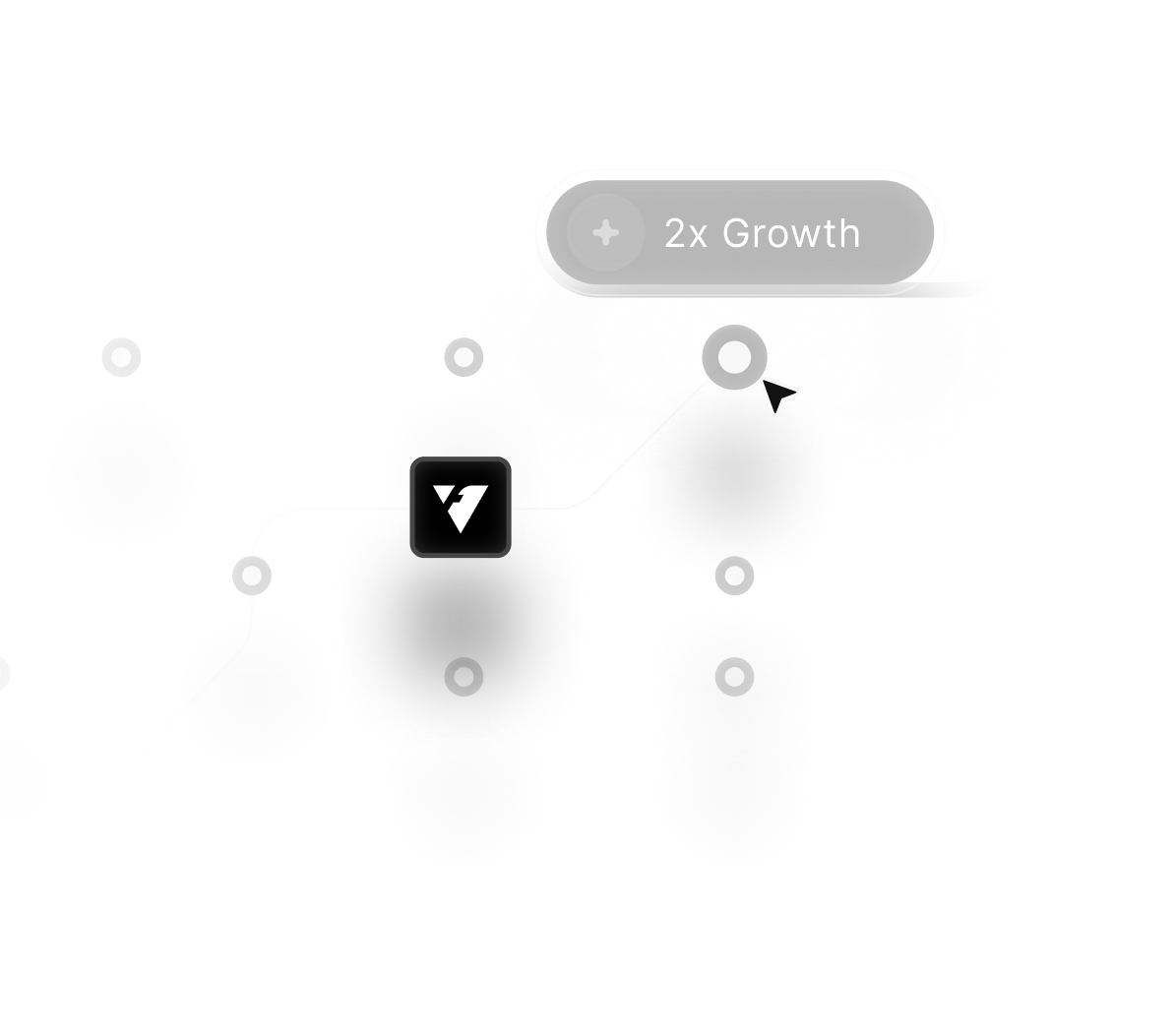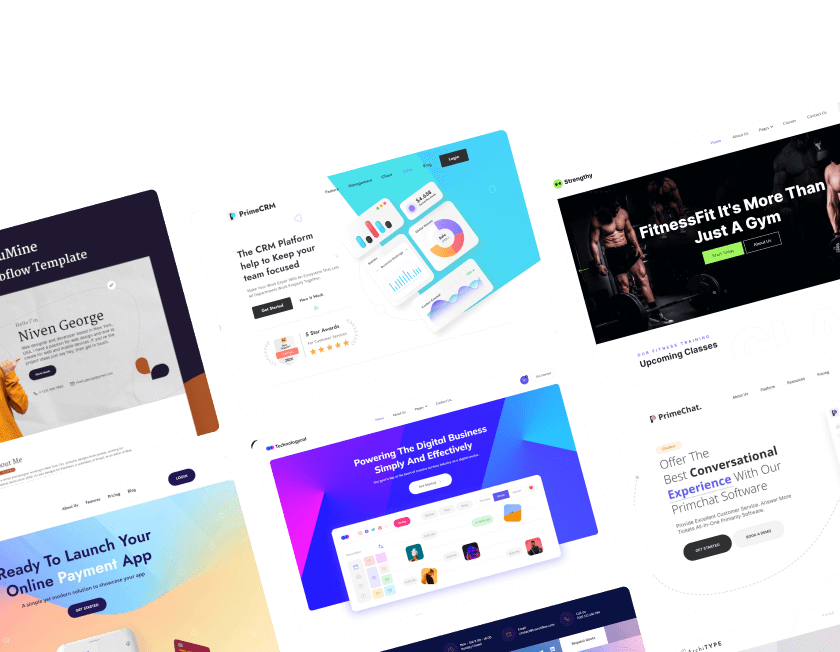How to Start a SaaS Business From Scratch in 2025 | No Code, No Funding, No Issue!

Starting a SaaS business from scratch feels overwhelming until you break the process into simple, manageable steps that reduce uncertainty. Modern founders often begin by identifying real customer problems instead of jumping straight into product development.
Strong validation ensures your idea aligns closely with the needs of users who are willing to pay for clear solutions. No-code tools make it possible to build prototypes and full products without technical skills or hiring developers.
Low-cost workflows empower early-stage creators to experiment, gather feedback, and refine ideas efficiently. Clear positioning helps potential customers quickly understand your value and how your SaaS fits their workflow.
Early traction depends on solving one meaningful problem rather than trying to launch a complicated suite of features. Strategic marketing using organic channels accelerates visibility without draining your budget.
Consistent iteration becomes the foundation of long-term growth as you learn directly from real-world usage. Starting lean gives founders the freedom to launch, adjust, and scale their SaaS without large financial pressure.
"Start your SaaS journey today.
Book a strategy call to build your roadmap."
Table of Contents
- Find a SaaS Idea That Sells
- Validate Your Idea
- Build Your MVP (Minimum Viable Product)
- Get Your First Paying Customers
- Scale to $10K/Month
- Ready to Start?
1. Find a SaaS Idea That Sells

Most people think they need a groundbreaking idea. The truth? Don't start with an idea — start with a problem.
Here's the formula: Find a problem → Create a solution = Success.
Think about it... what's something people constantly complain about? What's one big problem businesses deal with every day? The most successful SaaS companies didn't invent anything new—they just made existing processes faster, cheaper, and easier.
Your Game Plan:
Observe: Scroll through Facebook groups, Reddit, or even just listen to friends and colleagues. What are people constantly complaining about? Look for recurring pain points in specific industries or workflows.
Spot Trends: If you keep hearing the same problem over and over, congratulations! You've found a pain point with market potential. Pay special attention to problems that cause financial loss, waste time, or create significant frustration.
Create the Solution: Your SaaS should automate boring tasks, save people time, or make life easier. That's where the real money is. The best SaaS solutions often take complex processes and make them simple and accessible.
Need Ideas? 5 Hot SaaS Ideas for 2025:
- Automated Cold Emails: Personalize outreach, schedule follow-ups, and track responses — saving freelancers hours while boosting client acquisition.
- Doctor Appointment Chatbot: Let patients book, reschedule, and get reminders instantly, all synced with medical management software.
- Influencer Growth Tracker: Help brands track performance, calculate ROI, and discover top-performing content across platforms.
- AI YouTube Script Writer: Generate video scripts, hooks, and content ideas using AI to help creators produce faster and smarter.
- Remote Team Collaboration: Simplify project management, communication, and productivity tracking for remote teams.
You don’t need to reinvent the wheel — just make existing processes faster, cheaper, and easier. Find the pain, solve it, and the money will follow.
2. Validate Your Idea

Before you waste time and money building something nobody wants, let's test if your idea actually works. The goal here is to find out if people actually WANT this thing—and more importantly, if they'll PAY for it!
Quick Validation Checklist:
Create a Landing Page: Use Webflow, Framer, or WordPress—no coding needed. Keep it simple with a catchy headline, a short description that clearly articulates the problem you're solving, and a prominent "Join the Waitlist" button. Include pricing information (even if tentative) to gauge price sensitivity.
Run $50 in Ads: Target the right audience on Facebook, Google, or Reddit. Be specific with your targeting—focus on people who would actually use your SaaS. Create ad copy that speaks directly to the pain point you're addressing.
Track Signups: If people sign up, that's a great sign—there's interest! Monitor your conversion rate (visitors to signups). A 2-5% conversion rate is often considered promising for a new SaaS concept.
What If People Don't Sign Up?
If you launch your landing page and 100 people visit, but zero sign up for early access, don't panic—it's valuable feedback. This could mean:
- Your value proposition isn't clear enough
- You're targeting the wrong audience
- The problem isn't painful enough for people to seek a solution
- Your solution doesn't seem credible or effective
Use this as an opportunity to:
- Revise your messaging
- Interview potential users to better understand their needs
- Pivot to a related problem that might have more demand
- Reconsider your target market
Additional Validation Techniques:
Surveys and Interviews: Talk directly to your target audience. Prepare specific questions about their current challenges, existing solutions they use, and what would make them switch to a new tool. Pay attention to their exact words—this is gold for your marketing later.
Pre-Sell Your Solution: Create a simple outline of your product features and benefits, then offer early-bird pricing to see if people will put money down. This is the ultimate validation—someone willing to pay before the product is even built.
Competitor Analysis: Research similar solutions in the market. Read their reviews carefully—what are users complaining about? These gaps represent opportunities for your product to shine.
Remember, validation isn't about proving your idea is perfect. It's about gathering feedback to refine your concept before investing significant resources. Better to spend $50 now than $50,000 building something nobody wants.
3. Build Your MVP (Minimum Viable Product)

You've validated your idea, people are actually interested, and now it's time to build! But before you go into full development mode, let's talk about the right way to build your MVP.
What is an MVP? And Why Does It Matter?
Your MVP is the simplest version of your product that solves the core problem—not the feature-packed software you're dreaming of, just a basic version that proves your idea works.
Think about it like this: The first version of Instagram wasn't the sleek, polished app we know today. It was a super basic photo-sharing tool. Same with Uber—it didn't start with real-time tracking, split payments, or fancy surge pricing. It was just a way to book a ride.
Your MVP is NOT supposed to be perfect—it's just supposed to work well enough to solve the core problem and gather feedback.
No-Code Tools to Build Fast:
Bubble: Create fully functional web apps with powerful databases, user authentication, and payment processing—all without writing code. The visual editor lets you design your interface and set up workflows through a drag-and-drop interface.
Webflow: Perfect for building dynamic websites with complex interactions. Its CMS capabilities make it ideal for content-heavy SaaS applications, and its visual designer gives you pixel-perfect control.
Glide: Turn Google Sheets into beautiful, functional mobile apps in minutes. Particularly useful for data-driven applications or internal tools that need quick deployment.
If You Can't Code, No Problem!
Hire a Developer: Find talent on Upwork or Fiverr. Look for developers with experience in your industry and ask to see examples of similar projects they've completed.
Use Zapier + Google Sheets: Instead of building complex systems from day one, use these tools to simulate automation. This "Wizard of Oz" approach lets you test your concept without building everything upfront.
For example, if you're building an AI YouTube script writer:
- Create a form where creators submit their video topic
- Use Zapier to send this information to a Google Sheet
- Manually write scripts (or use AI to help) and send them back formatted nicely
- Track what types of scripts get the best feedback
Remember, your MVP is just the beginning. The goal is to get something into users' hands quickly so you can learn and improve based on real feedback.
4. Get Your First Paying Customers

You built your MVP—now what? How do you turn this into actual paying customers? Getting those first 100 customers is tough, but these strategies will help you make it happen.
Strategy 1: Cold Email (But Do It the Right Way)
Nobody likes spammy emails. But when done right, cold emails can bring in your first paying users without spending a dime on ads.
Find the right people: Research potential users who would benefit most from your solution.
Keep it short & natural: Your email should read like it's from a real person (because it is!). No fancy HTML, no sales language.
Offer something low-risk: Instead of asking for money immediately, offer a free trial, demo, or consultation.
Strategy 2: Facebook & LinkedIn Groups
Think of these groups as digital networking events. If you just drop your link and disappear, nobody cares. But if you genuinely help people, they'll start checking out your product on their own.
Find relevant groups: Look for communities where your ideal customers hang out.
Provide value first: Answer questions, give advice, and share useful insights before mentioning your product.
Casually introduce your product: When someone mentions a problem your SaaS solves, offer your solution as an option—not a sales pitch.
Strategy 3: YouTube & TikTok Content
People love learning for free. If your content provides value, they'll naturally want to check out your product.
Create educational content: Make videos that solve real problems related to your SaaS.
Show your product in action: Demonstrate how your tool solves real problems in practical situations.
Leave breadcrumbs: Mention your product naturally within the content, with links in the description.
Strategy 4: Launch on Product Hunt & Reddit
These platforms can drive significant initial traffic if you approach them correctly.
Product Hunt:
- Create a compelling listing with clear screenshots and a concise value proposition
- Launch on Tuesday or Wednesday (statistically the best days)
- Respond quickly to all comments and questions
Reddit:
- Find relevant subreddits like r/SaaS or r/Entrepreneur
- Share your journey rather than just your product
- Format your post as "I built [product] to solve [problem], here's what I learned..."
Remember, the first 100 customers are the HARDEST to get, but they're also your most valuable. These early adopters will provide crucial feedback, testimonials, and word-of-mouth marketing.
5. Scale to $10K/Month

Customers are rolling in, cash flow is starting, and now it's time to SCALE! Here's how to level up your SaaS and hit that $10K/month milestone.
Growth Hack 1: Automate Customer Support
As you grow, answering the same questions repeatedly becomes unsustainable. Implement these solutions:
Create a comprehensive knowledge base: Document answers to common questions, with screenshots and videos.
Implement a chatbot: Tools like Intercom or Crisp can handle basic questions and direct more complex issues to your team.
Set up email templates: Prepare templates for common responses to save time while maintaining a personal touch.
Growth Hack 2: Launch a Referral Program
Your happy customers can become your most effective marketing channel. Here's how to incentivize referrals:
Offer mutual benefits: Give rewards to both the referrer and the new customer (e.g., "Give $20, Get $20").
Make sharing simple: Provide pre-written emails, social media posts, and shareable links.
Track and acknowledge: Show customers how many friends they've referred and the rewards they've earned.
Growth Hack 3: Run Retargeting Ads
Not everyone converts on their first visit. Retargeting helps bring them back:
Segment your audience: Create different ad campaigns based on which pages visitors viewed or how far they got in your signup process.
Create value-focused ads: Highlight benefits, case studies, or educational content rather than just sales messages.
Test different platforms: Facebook, Instagram, LinkedIn, and Google Display Network all offer retargeting options—find what works for your audience.
Growth Hack 4: Raise Your Prices
Many founders undercharge for their SaaS. As you prove value and add features:
Implement tiered pricing: Create good/better/best options to capture different market segments.
Grandfather existing customers: When raising prices, let current customers keep their original rate to build goodwill.
Test price sensitivity: Experiment with different price points for new customers to find the optimal rate.
Growth Hack 5: Build a Community
Creating a space where your users can connect adds tremendous value to your SaaS:
Start a private group: Create a Facebook group, Discord server, or Slack community where users can share tips and success stories.
Host virtual events: Regular webinars, Q&A sessions, or training workshops build loyalty and reduce churn.
Highlight user success: Share case studies and testimonials to inspire others and showcase what's possible with your tool.
6. Ready to Start?
Starting a SaaS business in 2025 is simpler than ever. The key is to take action. Don’t overthink it.
Find a problem, build a simple solution, and get it in front of people.
Need help launching or marketing your SaaS? Book a free consultation call or drop me an email. Let’s make your SaaS dream a reality!
Conclusion
Launching a SaaS business in 2025 has never been more accessible thanks to modern tools and low-cost solution. Validation becomes your greatest advantage because it prevents wasted effort and guides product shaping.
Strong focus on user needs creates purposeful features rather than unnecessary complexity. No-code platforms reduce development pressure by enabling fast experimentation throughout the journey.
Organic marketing channels help early founders attract audiences without heavy spending. Lean strategies ensure every decision contributes directly toward achieving clarity, revenue, or growth.
Staying adaptable through ongoing improvements helps your SaaS meet user needs effectively as trends and requirements change. Starting small builds confidence and momentum, ultimately leading to a scalable and profitable SaaS venture.

FAQ
1. What is the best first step when starting a SaaS?
Understanding a real customer problem helps you shape a focused solution before building anything.
2. How can I validate my SaaS idea quickly?
Talking to potential users, collecting pain points, and testing simple prototypes confirm real demand.
3. Why is no-code popular for SaaS founders?
No-code tools let you create functional products faster without hiring developers or writing complex code.
4. Where should early founders find their first users?
Communities, social platforms, and niche groups provide spaces where potential users actively discuss problems.
5. Who can run a SaaS business successfully?
Anyone who understands a specific user problem and can maintain consistent communication with customers.
6. How can a SaaS grow without funding?
Lean strategies, strong positioning, organic marketing, and focused features support natural, steady growth.
Table of Contents
Choose Our Service, Grow Fast!
Follow Us
Related Posts

Explore 38+ free Framer templates for 2025 with updated designs. Create beautiful, fast, and fully cloneable websites that are SEO-friendly and easy to customize.
Framer’s marketplace offers over 2,000+ modern and fully customizable templates, making it easy to find the perfect starting point for your next website. This list highlights the #1 selected 38+ Free Framer templates for 2025, all handpicked for quality and performance."


December 5, 2025
Impactful hero videos guide viewers through energy and storytelling, while static imagery excels in simplicity, fast loading, and instantly communicating core brand value.
Impactful hero videos guide viewers through energy and storytelling, while static imagery excels in simplicity, fast loading, and instantly communicating core brand value.


Avoid costly SaaS errors with our guide to common mistakes and proven tips to boost product adoption, increase revenue, and enhance overall customer success.
Avoid costly SaaS errors with our guide to common mistakes and proven tips to boost product adoption, increase revenue, and enhance overall customer success.

Ready to Scale Your Project to the Next Level?
Let's take your project to new heights, reach out and see how we can help you.




















